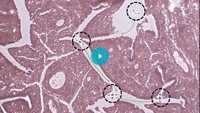Advertisement
Grab your lab coat. Let's get started
Welcome!
Welcome!
Create an account below to get 6 C&EN articles per month, receive newsletters and more - all free.
It seems this is your first time logging in online. Please enter the following information to continue.
As an ACS member you automatically get access to this site. All we need is few more details to create your reading experience.
Not you? Sign in with a different account.
Not you? Sign in with a different account.
ERROR 1
ERROR 1
ERROR 2
ERROR 2
ERROR 2
ERROR 2
ERROR 2
Password and Confirm password must match.
If you have an ACS member number, please enter it here so we can link this account to your membership. (optional)
ERROR 2
ACS values your privacy. By submitting your information, you are gaining access to C&EN and subscribing to our weekly newsletter. We use the information you provide to make your reading experience better, and we will never sell your data to third party members.
Biological Chemistry
Training Immune Cells To Combat Disease
Immunology: Researchers trap immune cells in droplets of water in oil in hopes of reprogramming them
by Katherine Bourzac
March 5, 2013

Some biologists would like to train patients’ own immune systems to treat diseases such as cancer and autoimmune disorders. They envision programming immune cells to destroy tumor cells or to stop immune system attacks on healthy tissue. Now a team of German researchers reports a method that traps immune cells in microscopic water droplets and exposes the cells to chemical signals that could teach them the difference between friend and foe (J. Am. Chem. Soc., DOI: 10.1021/ja311588c).

In our immune systems, T cells play many key roles in preventing disease. They attack invaders such as viruses, help hold the immune system’s memory of past infections, and even prevent other immune cells from attacking the body’s own tissue. Joachim P. Spatz and Ilia Platzman, researchers at Max Planck Institute for Intelligent Systems, in Stuttgart, Germany, study how T cells mature and get trained in a particular task. Many types of T cells interact with antigen-presenting cells, which gather up and display fragments of proteins from viruses, bacteria, and other invaders. Through these cellular interactions, the T cells learn how to identify threats and help the immune system eliminate them.
Immunologists believe it will be possible to treat diseases by mimicking this process outside the body. For example, a doctor could isolate a cancer patient’s own T cells, expose the cells to antigens specific to the cancer, and then transplant the cells back to direct the immune system to attack the tumor.
Previously developed techniques have exposed T cells to flat, relatively rigid surfaces patterned with antigens. But some researchers think a more optimal approach would involve exposing the T cells to an environment that mimics the three-dimensional curvature and squishiness of real cells.
The Max Planck Institute group thought they could create such an environment by enclosing T cells within droplets of water in oil. The inner surface of these droplets contains surfactant molecules that produce a fluid and mechanically soft surface, like that of a cell membrane. The team also developed a way to anchor biomolecules to the surfactants, to mimic the surfaces of antigen-presenting cells.
The researchers make the droplets by mixing two streams of liquid in a microfluidic system: an oil solution of the surfactants and a water-based mixture of T cells and culture medium. When the two streams meet, droplets form, with the T-cell mixture trapped inside bubbles of surfactant. The researchers attach gold nanoparticles decorated with antigens to the water-facing end of the surfactants. These particles act like the surfaces of antigen-presenting cells. The droplets can be as small as 10 µm wide, and can hold up to six cells each.
In a proof of concept experiment, the scientists coated the gold particles with protein fragments known to interact with T cells. When they looked at the droplets under a microscope, they saw that the T cells adhered to the droplets’ inner surfaces. In droplets made with undecorated gold nanoparticles, the cells floated around randomly within the bubbles.
The cells can survive inside the droplets for five days, after which time Platzman believes they run out of food, since the volume of the droplets is extremely small—just a few picoliters. The researchers next plan to use these droplets to expose T cells to disease-related antigens.
David A. Weitz, an applied physicist at Harvard University, thinks the method’s ability to control both the T cell’s spatial and chemical environment will help biologists better understand the cells’ training process. “It’s a very clever combination of biological and nonbiological systems,” he adds.





Join the conversation
Contact the reporter
Submit a Letter to the Editor for publication
Engage with us on Twitter